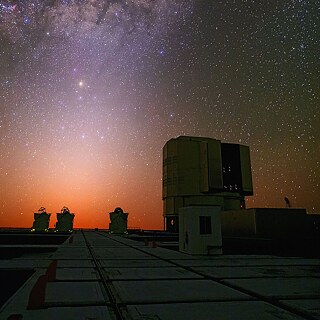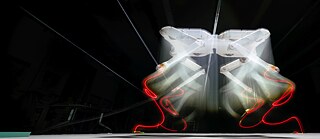
The face of Earth
Humans have been transforming Earth for thousands of years. Early farmers cut down trees to create space for fields and pastures. Now, human use accounts for around 50 percent of Earth’s total land surface. Accounting for 37 percent, agriculture makes up the largest proportion of this.
Intensive, industrial-scale agriculture in particular has negative consequences for the landscape, biodiversity and the water supply. But other factors are also permanently changing the face of the planet. In cities such as Tokyo, São Paulo, New York, Cairo and Shanghai, millions of people live in very close proximity to each other. Roads and rail lines criss-cross the globe. And our toxic legacies – from microplastics to nuclear waste – will still linger on long after future generations inhabit this planet.
In the Almeria region in Southern Spain millions of tonnes of cucumbers, tomatoes, peppers, avocados and strawberries are grown and exported –. one third of this production goes to Germany. These crops are almost exclusively grown in polytunnels and artificially watered. Across these 350 square kilometres a ‘Sea of plastic’ has sprung up because almost the entire landscape is encased in plastic sheeting. There is no room here for animals or wildflowers. In addition, the intensive watering regime means that the water table is falling and the region is becoming increasingly dry. Pesticides and fertilisers compound the problem ensuring that precious little lives here outside of the polytunnels.
The Anthropocene means more than just climate change. Human activities transform entire extensive landscapes. One example is the Mississippi, one of the world’s mightiest rivers. Along its 3778 kilometre course it flows through the entire American heartland and reflects its ecological, social, industrial and historic changes. Today, the Mississippi is a massive agricultural and industrial corridor. Along its banks lies the radioactive waste from uranium production, oil refineries and steel works, yet also cities such as St. Louis, now shaped by deindustrialisation. The most disparate cultures have left their mark here and also co-mingled, historically rooted inequalities are still evident. Through the interdisciplinary project “Mississippi. An Anthropocene River” both German and American researchers are together investigating the river as the poster child of the profound changes humankind has wrought on Earth.
 ©
©
Across the globe, a high proportion of bottles made of PET are not recycled, instead they end up being thrown away. Much of this plastic waste ends up in our oceans. Estimates suggest that, by 2050, our seas will contain more plastic than fish. Cell biologists in Marburg are working on a technology to biodegrade microplastics in seawater. It’s been known for a number of years that certain bacteria can biodegrade the plastic PET with help of the enzyme PETase – though not in saltwater. The Scientists in Marburg are therefore employing a marine diatom in their experiments. They have genetically engineered a customised version of the bacterial gene into this single-celled organism which contains the genetic code for the PETase enzyme. Now the microalga can produce this enzyme and biodegrade PET. The scientists have demonstrated in the laboratory that PET microplastics can be removed from seawater but there is still some way to go to create a technically robust process.
In the 1980s, the Emscher ranked as Germany’s most polluted river. It flows through the Ruhr district – a region which in the 19th and 20th centuries was heavily scarred by mining and heavy industry. For a long time, underground sewers could not be built here because of the many places where coal mining resulted in subsidence. Therefore, the heavily polluted water was discharged into the river. It became nothing more than a stinking sewer with a concrete bed.
The rewilding of the river Emscher and its many tributaries in the Ruhr area kicked off 30 years ago. Around half of the 326 kilometre of these rivers have now been returned to its natural state. Rare kingfishers once again live along its banks. This ecological restoration is by far the biggest of its kind worldwide and it is costing more than five billion Euros. Delegations from countries with similar issues visit the Ruhr district to learn from this project’s successes.
Sea of plastic
In the Almeria region in Southern Spain millions of tonnes of cucumbers, tomatoes, peppers, avocados and strawberries are grown and exported –. one third of this production goes to Germany. These crops are almost exclusively grown in polytunnels and artificially watered. Across these 350 square kilometres a ‘Sea of plastic’ has sprung up because almost the entire landscape is encased in plastic sheeting. There is no room here for animals or wildflowers. In addition, the intensive watering regime means that the water table is falling and the region is becoming increasingly dry. Pesticides and fertilisers compound the problem ensuring that precious little lives here outside of the polytunnels.
An Anthropocene river
The Anthropocene means more than just climate change. Human activities transform entire extensive landscapes. One example is the Mississippi, one of the world’s mightiest rivers. Along its 3778 kilometre course it flows through the entire American heartland and reflects its ecological, social, industrial and historic changes. Today, the Mississippi is a massive agricultural and industrial corridor. Along its banks lies the radioactive waste from uranium production, oil refineries and steel works, yet also cities such as St. Louis, now shaped by deindustrialisation. The most disparate cultures have left their mark here and also co-mingled, historically rooted inequalities are still evident. Through the interdisciplinary project “Mississippi. An Anthropocene River” both German and American researchers are together investigating the river as the poster child of the profound changes humankind has wrought on Earth.
Microalgae digest plastic
Across the globe, a high proportion of bottles made of PET are not recycled, instead they end up being thrown away. Much of this plastic waste ends up in our oceans. Estimates suggest that, by 2050, our seas will contain more plastic than fish. Cell biologists in Marburg are working on a technology to biodegrade microplastics in seawater. It’s been known for a number of years that certain bacteria can biodegrade the plastic PET with help of the enzyme PETase – though not in saltwater. The Scientists in Marburg are therefore employing a marine diatom in their experiments. They have genetically engineered a customised version of the bacterial gene into this single-celled organism which contains the genetic code for the PETase enzyme. Now the microalga can produce this enzyme and biodegrade PET. The scientists have demonstrated in the laboratory that PET microplastics can be removed from seawater but there is still some way to go to create a technically robust process.
Structural change – A project spanning generations
In the 1980s, the Emscher ranked as Germany’s most polluted river. It flows through the Ruhr district – a region which in the 19th and 20th centuries was heavily scarred by mining and heavy industry. For a long time, underground sewers could not be built here because of the many places where coal mining resulted in subsidence. Therefore, the heavily polluted water was discharged into the river. It became nothing more than a stinking sewer with a concrete bed.The rewilding of the river Emscher and its many tributaries in the Ruhr area kicked off 30 years ago. Around half of the 326 kilometre of these rivers have now been returned to its natural state. Rare kingfishers once again live along its banks. This ecological restoration is by far the biggest of its kind worldwide and it is costing more than five billion Euros. Delegations from countries with similar issues visit the Ruhr district to learn from this project’s successes.
Cooperation partners

|

|
You might find this also interesting





